
Paul Cézanne was a French Post-Impressionist painter whose work introduced new modes of representation and influenced avant-garde artistic movements of the early 20th century, whose work formed the bridge between late 19th-century Impressionism and early 20th century Cubism.
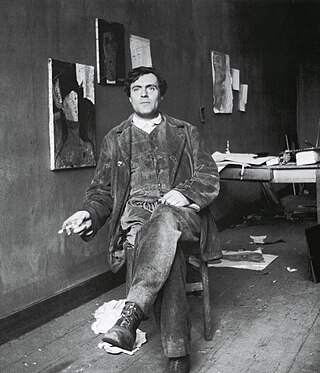
Amedeo Clemente Modigliani was an Italian painter and sculptor of the École de Paris who worked mainly in France. He is known for portraits and nudes in a modern style characterized by a surreal elongation of faces, necks, and figures — works that were not received well during his lifetime, but later became much sought-after. Modigliani spent his youth in Italy, where he studied the art of antiquity and the Renaissance. In 1906, he moved to Paris, where he came into contact with such artists as Pablo Picasso and Constantin Brâncuși. By 1912, Modigliani was exhibiting highly stylized sculptures with Cubists of the Section d'Or group at the Salon d'Automne.

Chaïm Soutine was a French painter of Belarusian-Jewish origin of the School of Paris, who made a major contribution to the Expressionist movement while living and working in Paris.
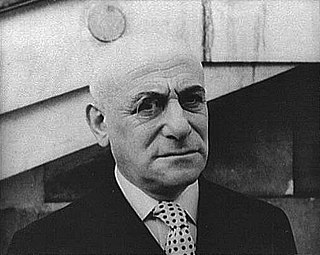
Max Jacob was a French poet, painter, writer, and critic.

Jeanne Hébuterne was a French painter and art model best known as the frequent subject and common-law wife of the artist Amedeo Modigliani. She took her own life two days after Modigliani died, and is now buried beside him.

A catalogue raisonné is a comprehensive, annotated listing of all the known artworks by an artist either in a particular medium or all media. The works are described in such a way that they may be reliably identified by third parties, and such listings play an important role in authentication.

Montparnasse 19 is a 1958 French-Italian drama film directed and co-written by Jacques Becker, partially based on the last years of the life of Italian artist Amedeo Modigliani, who worked and died in abject poverty in the Montparnasse area of Paris. Some of his most famous paintings done then were of his last two lovers, Beatrice Hastings and Jeanne Hébuterne.
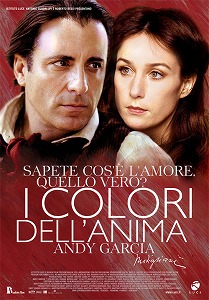
Modigliani is a 2004 drama biographical film written and directed by Mick Davis and starring Andy García, Elsa Zylberstein, Omid Djalili, Hippolyte Girardot, Eva Herzigova and Udo Kier. It is based on the life of the Italian artist Amedeo Modigliani.

Côte des Bœufs at L'Hermitage is an oil-on-canvas landscape painting by the French Impressionist artist Camille Pissarro. It was painted in 1877, and displayed the same year at an exhibition now generally referred to as the third Impressionist exhibition. The picture is large by Pissarro's measure, and he described the effort of painting it as the 'work of a benedictine'. Pissarro was proud of the painting, and it remained in his family's possession until 1913. It presently hangs in the National Gallery, London.

Nude Sitting on a Divan (The Beautiful Roman Woman) is an oil on canvas painting by Italian artist Amedeo Modigliani depicting a partially draped woman seated with crossed legs against a warm red background. The work was one of a series of nudes painted by Modigliani in 1917 that created a sensation when exhibited in Paris that year. On November 2, 2010, the painting sold at a New York auction for $68.9 million, a record price for an artwork by Modigliani.

Lionello Venturi was an Italian historian and critic of art. He edited the first catalogue raisonné of Paul Cézanne.

The Boy is an oil painting by Italian artist Amedeo Modigliani created in 1919. It is currently part of the permanent collection at the Indianapolis Museum of Art.

"Modigliani (Lost in Your Eyes)" is the fourth single released by the American synthpop band Book of Love. The song was included on the band's eponymous debut album Book of Love in 1986. "Modigliani (Lost in Your Eyes)", was released as a single in early 1987, making it the fourth and final single release from the album. The B-side to the single is a remixed version of "Modigliani" by Omar Santana, titled "Mo'dub'iani".

Groupe de femmes, also called Groupe de trois femmes, or Groupe de trois personnages, is an early Cubist sculpture created circa 1911 by the Hungarian avant-garde, sculptor, and graphic artist Joseph Csaky (1888–1971). This sculpture formerly known from a black and white photograph had been erroneously entitled Deux Femmes , as the image captured on an angle showed only two figures. An additional photograph found in the Csaky family archives shows a frontal view of the work, revealing three figures rather than two. Csaky's sculpture was exhibited at the 1912 Salon d'Automne, and the 1913 Salon des Indépendants, Paris. A photograph taken of Salle XI in sitiu at the 1912 Salon d'Automne and published in L'Illustration, 12 October 1912, p. 47, shows Groupe de femmes exhibited alongside the works of Jean Metzinger, František Kupka, Francis Picabia, Amedeo Modigliani and Henri Le Fauconnier.
Marc Restellini is a French art historian, museum director, founder of the Pinacothèque de Paris, and a specialist on Amedeo Modigliani.

View of Auvers-sur-Oise is the common English name for a Paul Cézanne painting known by various French names, usually Paysage d'Auvers-sur-Oise, or in the artist's catalogue raisonné, Groupe de maisons, paysage d'île de France. It is believed to have been painted in 1879–80, several years after Cézanne's residence in Auvers-sur-Oise, a small village northwest of Paris. The painting depicts a landscape of Northern France; the exact location has not been determined.
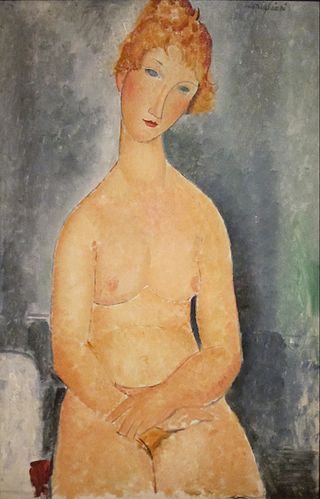
Seated Nude is an oil on canvas painting by Italian artist Amedeo Modigliani created in 1918. The painting is one of the dozens of nudes created by Modigliani between 1916 and 1919.
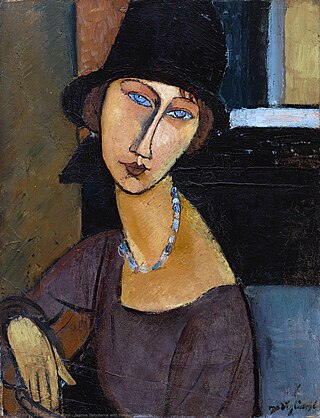
Jeanne Hébuterne with Hat and Necklace is an oil-on-canvas painting by Italian painter Amedeo Modigliani created in 1917.

Jeanne Hébuterne with Bare Shoulders is an oil on canvas painting by Italian painter Amedeo Modigliani created in 1919. Modigliani depicted Jeanne Hébuterne in more than twenty works but never nude.

Nude on a Blue Cushion is an oil painting by Amedeo Modigliani, completed in 1917. It is currently on display at the National Gallery of Art. The painting depicts a nude woman relaxing on her side on a blue cushion. It is one of a series of nudes he painted from 1916-1919 commissioned by art dealer Leopold Zborowski. When the collection was displayed in Paris, the police reportedly shut it down on its opening day for its obscenity.



















